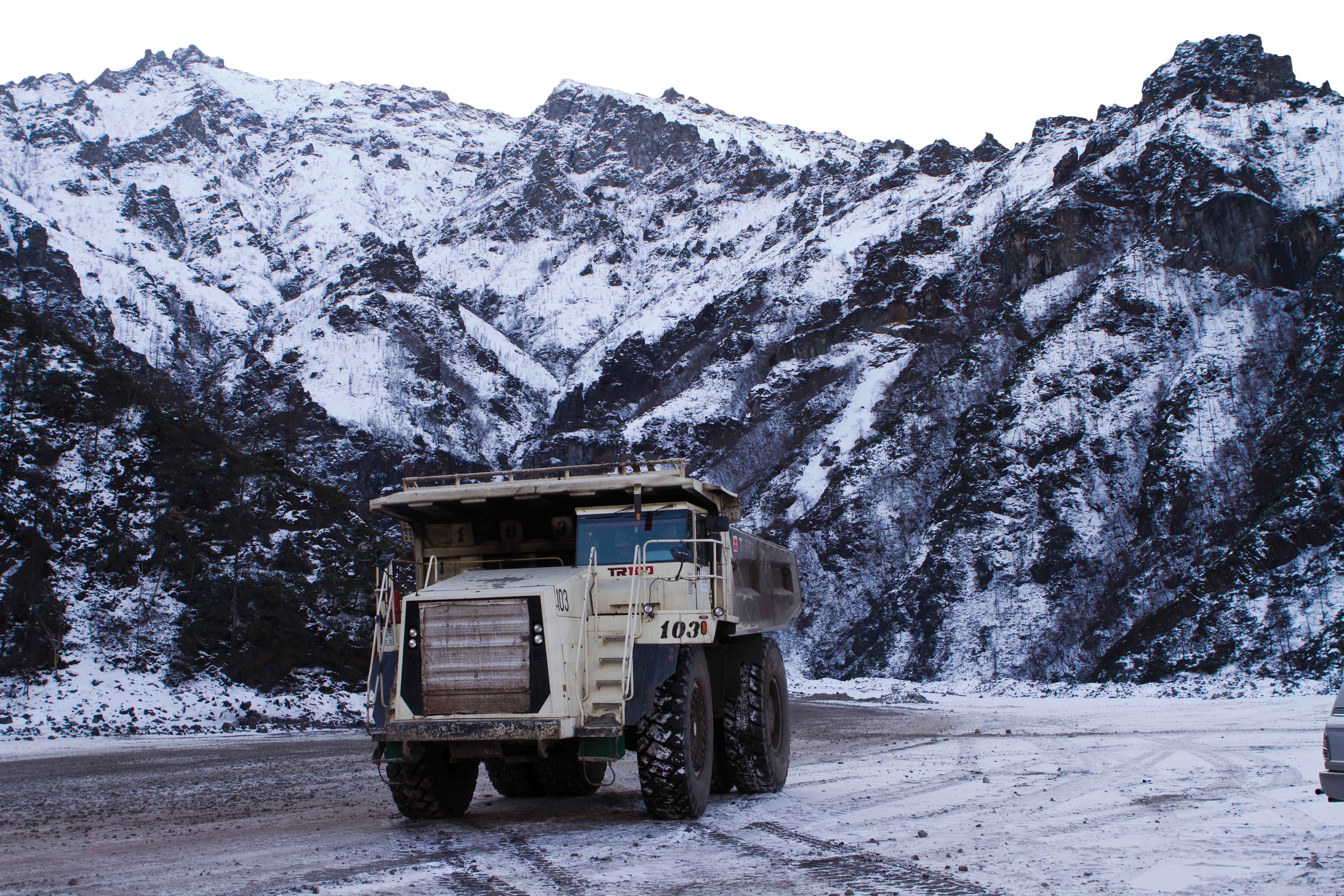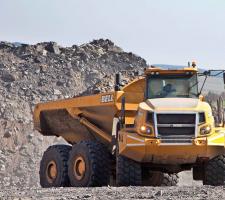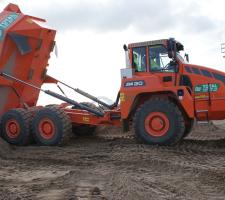
Efficient hauling is vital to boosting the bottom line of any quarry business. Guy Woodford and Dan Gilkes report on what’s new in the rigid and articulated truck world.
In temperatures that can drop as low as -50°C in winter, six
Coal power is one of the major sources of energy in Russia, which has some the largest coal reserves in the world, with this region responsible for of the country’s biggest discovery.
SUEK provides 41% of Russia’s power industry demand for coal fuel and now produces 600,000 tonnes of coal annually at the Apsatsky mine.
The six Terex Trucks TR100 rigid haulers based at the mine carry out up to 100 runs a day, testing their robust design to the limit.
“The TR100s work round the clock and have proved to be a good choice to suit our operating conditions perfectly,” said Oleg Likhodumov, deputy director of the Apatsky open pit mine. “They are reliable and easy to maintain. For stripping areas and coal mining we also operate 38tonne Terex Trucks articulated haulers, the TA400s.”
The TR100s’ cabin is equipped with safety guards for protection on site, and feature air conditioning and heating systems to ensure a comfortable and productive operation in the extreme conditions.
The trucks have been in operation since 2012, after the construction of the access road to the mine. Even their journey to arrive at this remote location proved a logistical challenge. They were delivered to Siberia in Semi-knocked down (SKD) form via St Petersburg in order to comply with the Russian Railways regulations. Once on site, it took two days to assemble and commission each truck before they were able to start providing their round the clock heavy-duty support.
Operator Maxim Shoizhalsanov has driven Terex Trucks TR100s for over three years. “The big advantage of this machine is its hydraulic brakes,” he said. “They ensure dependable slowdown on steep slopes and are good on the ascents. A retarder in the gearbox is useful because it allows good slowdown on the descents.”
Service is carried out on site by Eurasia Machinery under a contract with the exclusive Russian Federation Terex Trucks dealer,
At
This shorter rear chassis carries a shorter, squarer 35m² dump body that offers a similar loading target for excavators and shovels used to rigid truck designs. The truck uses underbody hydraulic tipping rams like a rigid truck, rather than the side-mounted rams of a conventional ADT. The B60E is powered by an
“By combining the ADT concept as we know it with the single rear axle, we came up with a 4x4 with full articulation steering and oscillation joint and that gives us the ability to keep all four driving wheels on the ground and fully utilise the traction that’s available,” said product marketing manager Tristan du Pisanie.
“This gives our 60tonne truck more off-road capability than any conventional rigid truck. The rear chassis and suspension are distinctly different from an ADT concept. A cradle supports the rear axle with struts being used to create shock absorption for a controlled ride.”
The B60E has been designed for hard ground applications, such as mines and quarries, with tight turns.
“However, the B60E’s real niche is where wet weather conditions can adversely affect traction and rigid trucks would normally have to stop production when rain falls,” said du Pisanie.
Also during bauma 2016, Bell Equipment was set to introduce the 41tonne payload B45E. Powered by the latest six-cylinder Mercedes-Benz off-highway diesel engines and driving through
To accommodate the larger 7-speed transmission, Bell has removed the automatic retarder on the E-Series trucks’ transmission and opted to incorporate this feature into the wet brake system. The trucks have also adopted a
Two new
Like all Doosan ADTs, the DA30 model features an articulation hinge positioned behind the turning ring to provide equal weight distribution to the front axle even during maximum steer articulation. This together with a free-swinging rear tandem bogie ensures equal distribution of weight to each wheel and guarantees permanent six-wheel contact and drive for equal power distribution and excellent performance on difficult terrain. Thomas Halligan, Owner of TPH, said: “We purchased the new Doosan DA30 ADTs equipped with high flotation tyres for use on contracts such as the Mersey Gateway Bridge project, where low ground pressure is required. At TPH, we believe in offering a ‘one-stop’ service for our customers covering all types of machine needed for their sites. Since we started purchasing Doosan ADTs in 2014, we have seen very good utilisation especially for the trucks with high flotation tyres on projects across north-west England.”
The two new Doosan ADTs have joined eight more DA30 models that already form part of the hire fleet at TPH, all of which were purchased from Norwest Plant, based in Wigan, county Lancashire, the authorised Doosan and
The 10 Doosan DA30 ADTs are part of the impressive TPH rental fleet that also includes over 100 Doosan excavators and wheeled loaders, all purchased from Norwest Plant. Work started on the Mersey Gateway Project on 7 May 2014 to build a new six-lane toll bridge over the Mersey between Runcorn and Widnes and when it opens in autumn 2017 it will help to relieve the congested Silver Jubilee Bridge further up the river. As well as the construction of the new bridge, the Mersey Gateway Project also involves upgrading 7km of highways to the north and south of the river (the main bridge is 2.2km long), and changing traffic flow so the vast majority of traffic will use the new bridge.
A temporary trestle bridge has been built as an access platform for the construction teams to work from to build the new structures in the river. Accessed from the trestle bridge, temporary cofferdams have been built to enable foundations to be laid for the three pylons that will support the main bridge. The Doosan DA30 ADTs are being used to remove earth excavated from these cofferdams and from others across the site.
As well as the work on the bridge in the estuary, the Doosan DA30 ADTs are being used in the construction of the supporting piers for the elevated approach viaducts, which cross the Manchester Ship Canal and the St Helens Canal. Each approach viaduct is held up by a number of supporting piers – there are 20 in total, which will stretch across the saltmarsh on either side of the estuary. The DA30 ADTs also have a role in the reuse and restoration of the land across the project site. A significant amount of material is being excavated from within the project boundary and nearly all of this material will be reused on site.
















